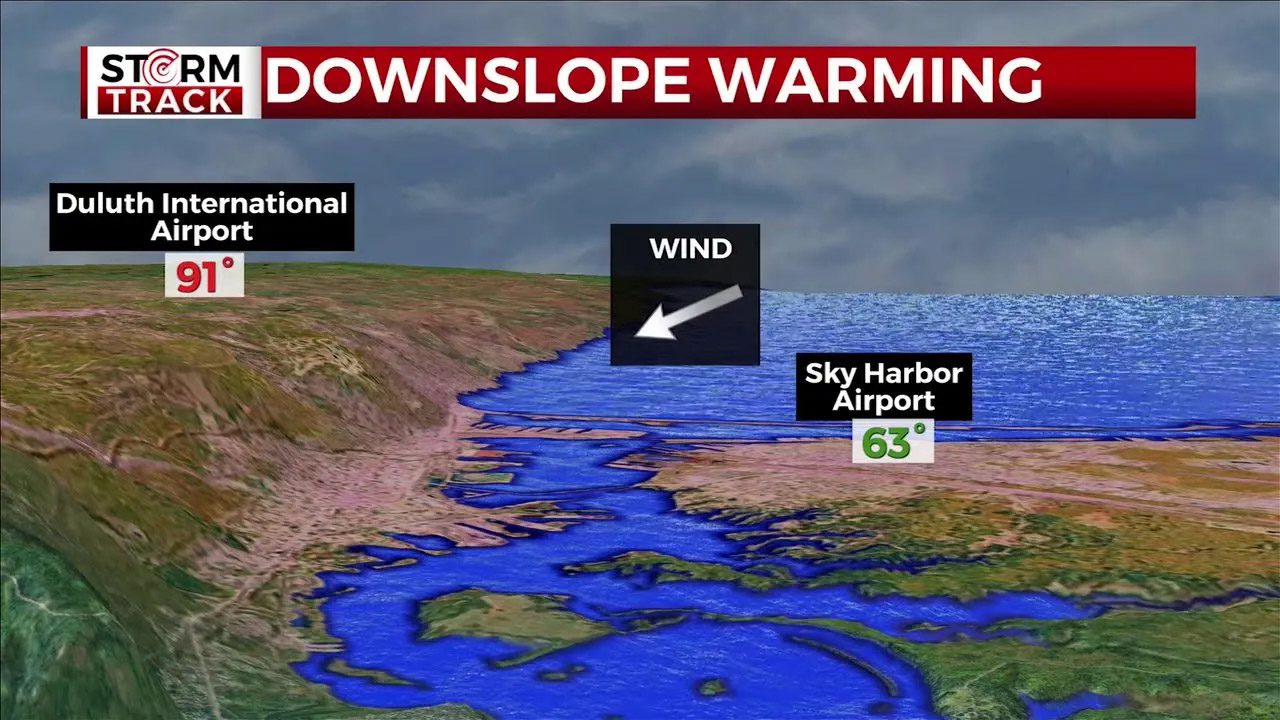Weatherz School: Lake Superior and our temps

Lake Superior keeps things interesting for those spending time near it. When it comes to how the lake affects our temperatures, the main factors are the time of year, and the wind direction. You’re probably familiar with us talking about it being “cooler by the lake.
One perfect example of this was June 14, 2022. The heat index was 50 degrees lower on Park Point than it was in Hayward. A significant cooling effect like that requires a huge difference in temperature between the lake and the land.
The average surface temperature of Lake Superior is in the 40s well into June, so a wind off of the lake can make a big difference in spring and early summer. The effect lessens by late summer and early fall when the lake starts to catch up to the air temperature.
Because the land heats much faster than the lake, air rises over the land and creates low pressure. The cool waters bring sinking air and high pressure over Lake Superior. Since air flows from high to low pressure, this creates a lake breeze circulation.
This is why east winds are more common near the shorelines in the warmer months. The lake breeze develops when there isn’t a stronger weather system to take the steering wheel on wind direction.
The process can reverse at night and in the winter, with frigid land temps and warm open waters generating a “land breeze.”
It isn’t always cooler by the lake in the summer. In fact, sometimes it’s warmer. But the reason for this isn’t Lake Superior, it’s the topography.
Downslope warming is when air warms as it descends in elevation. The temperature rises at a rate of 5.5°F for every 1,000 feet. The elevation difference from the Duluth International Airport to the Sky Harbor Airport is 800 feet, allowing for downslope warming of up to 4°.
So, on a hot summer day with 91° on the hill, a gentle east wind can keep the temp by the lake at a cool 63°. But if a breezy northwest wind kicks in, it can be even hotter at the Sky Harbor Airport than it is at Duluth International.
Lake Superior can also be a source of warmth overnight. On the morning of September 13th, Superior had its first freeze of the season but temps near the lake stayed over 10 degrees higher in the 40s.
Lake Superior’s influence on our temperatures is nuanced and constantly changing. But that’s one of the things we love about the greatest of the Great Lakes.